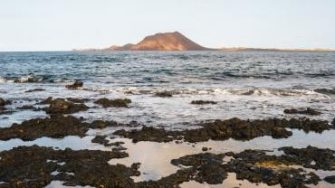- UNSW
- ...
- Centre for Marine Science and Innovation
- Our research
- Integrated micro-/macro-biology and ecology
- Coastal microbial observatories
- Home
- About us
-
Our research
-
Ecological management
- Clothes, fibres and filters that reduce pollution by micro and nano debris
- In Bygone Dives: Exploring the use of recreational SCUBA diving photographs
- Restoring oyster reefs to NSW
- Living Seawalls
- Operation Posidonia: Healing old wounds by restoring an endangered seagrass in boat mooring scars
- Operation Crayweed: restoring Sydney’s underwater forests
- Project Restore: restoration of seascapes in Sydney Harbour
-
Marine biotechnology and aquaculture
- Antibiotic resistance in the marine environment
- Priming fish with microbial communities to enhance health and digestibility of sustainable feeds
- Bio-prospecting marine microbial diversity for new antimicrobial drugs and bioactives
- Improving technologies for inland aquaculture in Papua New Guinea
- Improving the sustainability of rice-shrimp farming systems in the Mekong Delta, Vietnam
-
Anthropogenic and climate change impacts and interactions
- Ecology and impacts of marine invaders
- Impacts of multiple stressors on marine communities
- Impacts of urbanisation on the diversity and functioning of coastal systems
- In the spotlight: impacts of artificial light at night on the marine environment
- Linking functional diversity to stress thresholds for coastal conservation
- Effects of climate change on Shark Bay microbial mats
- Adapting to coastal tropicalisation: ecosystem function implications
- Global threats to ocean forests: understanding impacts of heatwaves, herbivores and diseases in kelp ecosystems
- How to make reliable high-resolution future projections for coastal regions
- Marine Heatwaves in a changing world
- Clothes, fibres and filters that reduce pollution by micro and nano debris
- Coastal, regional and global oceanography
- Fisheries and coastal resource management
-
Integrated micro-/macro-biology and ecology
- Coastal microbial observatories
- Functional diversity and redundancy of marine communities
- Microbial contribution to life in the deep sea
- The dynamics of evolution: How horizontal gene transfer drives the diversification and adaptation of complex, bacterial communities
- Probiotics for the ocean – how microbes can improve the health and performance of macroalgae
- Function and application of novel proteins from sponge symbionts
- Understanding disease in marine seaweeds: from molecular mechanisms to ecological consequences
- Understanding the role of antibiotic producing bacteria in the seaweed algal holobiont
- Wake interference by swimming crocodiles
- The effect of microbial diversity vs function on marine holobionts
- Understanding plant soil feedbacks control interactions between marine macrophytes
- Do microbes facilitate the range expansion of tropical fish into temperate systems?
- Science communication and outreach
- Solutions for estuarine and coastal stressors lab (SEACS Lab)
- Coastal and regional Oceanography lab
-
Ecological management
- Study with us
- Giving
- News
- Opportunities
- Home
- About us
-
Our research
Ecological management
- Clothes, fibres and filters that reduce pollution by micro and nano debris
- In Bygone Dives: Exploring the use of recreational SCUBA diving photographs
- Restoring oyster reefs to NSW
- Living Seawalls
- Operation Posidonia: Healing old wounds by restoring an endangered seagrass in boat mooring scars
- Operation Crayweed: restoring Sydney’s underwater forests
- Project Restore: restoration of seascapes in Sydney Harbour
Marine biotechnology and aquaculture
- Antibiotic resistance in the marine environment
- Priming fish with microbial communities to enhance health and digestibility of sustainable feeds
- Bio-prospecting marine microbial diversity for new antimicrobial drugs and bioactives
- Improving technologies for inland aquaculture in Papua New Guinea
- Improving the sustainability of rice-shrimp farming systems in the Mekong Delta, Vietnam
Anthropogenic and climate change impacts and interactions
- Ecology and impacts of marine invaders
- Impacts of multiple stressors on marine communities
- Impacts of urbanisation on the diversity and functioning of coastal systems
- In the spotlight: impacts of artificial light at night on the marine environment
- Linking functional diversity to stress thresholds for coastal conservation
- Effects of climate change on Shark Bay microbial mats
- Adapting to coastal tropicalisation: ecosystem function implications
- Global threats to ocean forests: understanding impacts of heatwaves, herbivores and diseases in kelp ecosystems
- How to make reliable high-resolution future projections for coastal regions
- Marine Heatwaves in a changing world
- Clothes, fibres and filters that reduce pollution by micro and nano debris
Integrated micro-/macro-biology and ecology
- Coastal microbial observatories
- Functional diversity and redundancy of marine communities
- Microbial contribution to life in the deep sea
- The dynamics of evolution: How horizontal gene transfer drives the diversification and adaptation of complex, bacterial communities
- Probiotics for the ocean – how microbes can improve the health and performance of macroalgae
- Function and application of novel proteins from sponge symbionts
- Understanding disease in marine seaweeds: from molecular mechanisms to ecological consequences
- Understanding the role of antibiotic producing bacteria in the seaweed algal holobiont
- Wake interference by swimming crocodiles
- The effect of microbial diversity vs function on marine holobionts
- Understanding plant soil feedbacks control interactions between marine macrophytes
- Do microbes facilitate the range expansion of tropical fish into temperate systems?
- Study with us
- Giving
- News
- Opportunities

While the distribution and dynamics of macroscopic organisms in the marine environment have been well studied for many decades, similar observations are lacking for microorganisms.
This has been mainly due to technical limitations, however recent development in high-throughput sequencing and bioinformatics allow us now to “observe” microorganisms in the natural environment in unprecedented scale and detail.
We have therefore established a large-scale coastal, microbial observatory program, which investigates the temporal and spatial dynamics of microbial communities in the water column, sediments and associated with corals, seaweeds, sponges and seagrasses. The outcome of this program will be one of the most comprehensive descriptions of microbial diversity and function in the coastal environment and a deeper understanding of how microbial systems respond to environmental change and, in turn, influence ecosystem function.




